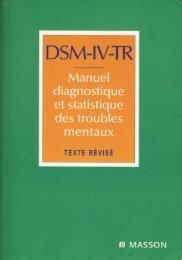You also want an ePaper? Increase the reach of your titles
YUMPU automatically turns print PDFs into web optimized ePapers that Google loves.
P a g e | - 22 -<br />
so they contained less and less silver. The market soon realized that this was a 75%<br />
depreciation. Thus, as a consequence, rampant inflation occurred in short order. The<br />
British currency quickly reversed course when Elizabeth the 1 st took the throne and<br />
named her financial advisor, Sir Thomas Gresham. This is where the fairly popular term<br />
“Gresham’s Law” originated among free market economists. It can be explained in<br />
different ways, but broadly speaking, it means “bad money drives out good.” In those<br />
days, it meant that if two currencies are in circulation, the undervalued one will be<br />
hoarded/exported and driven out of circulation while the other will be used in everyday<br />
transactions. Seigniorage, the right to coin money, was considered a source of income;<br />
thus, newly minted coins were overvalued relative to their weight in silver. Each new<br />
minting of a given metal resulted in inflation or confirmed Gresham’s Law and was driven<br />
out of circulation.<br />
We then move to the discovery of “the Americas,” in particular, the West Indies<br />
and the Caribbean, as Christopher Columbus and the conquistadors were looking for a<br />
new route to India. Initially, only gold was shipped backed to Spain from South America.<br />
It wasn’t until more than five decades later that silver mines were discovered, bringing<br />
with them, unprecedented wealth.<br />
The first major discovery was made in modern-day Bolivia, part of Peru at the<br />
time. The Potosi Mines were discovered in 1545, being the first large silver mines<br />
discovered in the “New World.” These mines were in the Andes Mountains and contained<br />
very pure and high-grade silver ore. During the first 20 years of mining at Potosi, 60<br />
tons were produced, followed by an average annual production of 240 tons per year for<br />
the next 115 years 31 . This amounted to 170,000,000 oz. of silver over the life of the<br />
Potosi Mines.<br />
Production after 1680 saw a sharp drop off, because once the extremely highgrade<br />
surface veins were fully exploited, grade and prevalence declined at depth. Thus<br />
we can conclude these were epithermal deposits, although this knowledge wasn’t known<br />
at the time, so it naturally was surprising to the miners. During the period of mining at<br />
Potosi, other smaller scale deposits were discovered both in Peru and Bolivia. However,<br />
the next big mines would be found in Mexico.<br />
The silver mines in Mexico were discovered and exploited relatively soon after that<br />
in Bolivia, and by 1650, silver production in Mexico exceeded that of Peru and Bolivia<br />
combined. Prior to the significant innovation in silver mining, exploration, extraction,<br />
recoveries, and refining developed during the 20 th century, Mexico’s peak production<br />
came in 1780, totaling 22,000,000 oz. Today, Mexico produces roughly 120,000,000 oz.<br />
This too will see a significant increase a decade from now, as explained in Chapter 3.<br />
This took place during the reign of Charles V, who, along with his successors,<br />
received the “Royal Fifth,” or 20%, of all the gold and silver extracted. Added to this was<br />
the seigniorage tax for producing money. Naturally, these taxes became too burdensome<br />
31 Cyrille Jubert, Silver Throughout History, p. 80.




